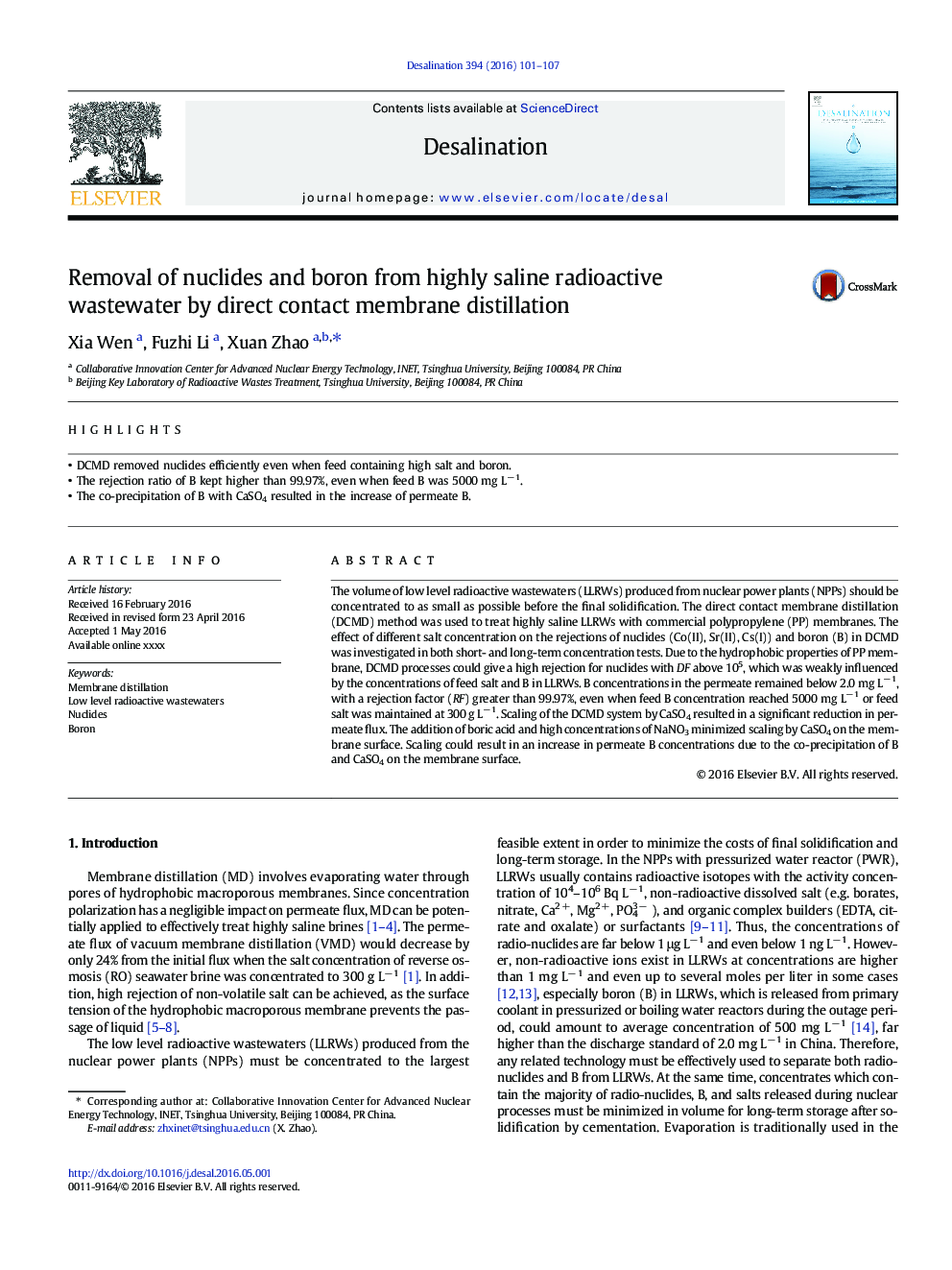| Article ID | Journal | Published Year | Pages | File Type |
|---|---|---|---|---|
| 622747 | Desalination | 2016 | 7 Pages |
Abstract
The volume of low level radioactive wastewaters (LLRWs) produced from nuclear power plants (NPPs) should be concentrated to as small as possible before the final solidification. The direct contact membrane distillation (DCMD) method was used to treat highly saline LLRWs with commercial polypropylene (PP) membranes. The effect of different salt concentration on the rejections of nuclides (Co(II), Sr(II), Cs(I)) and boron (B) in DCMD was investigated in both short- and long-term concentration tests. Due to the hydrophobic properties of PP membrane, DCMD processes could give a high rejection for nuclides with DF above 105, which was weakly influenced by the concentrations of feed salt and B in LLRWs. B concentrations in the permeate remained below 2.0 mg Lâ 1, with a rejection factor (RF) greater than 99.97%, even when feed B concentration reached 5000 mg Lâ 1 or feed salt was maintained at 300 g Lâ 1. Scaling of the DCMD system by CaSO4 resulted in a significant reduction in permeate flux. The addition of boric acid and high concentrations of NaNO3 minimized scaling by CaSO4 on the membrane surface. Scaling could result in an increase in permeate B concentrations due to the co-precipitation of B and CaSO4 on the membrane surface.
Keywords
Related Topics
Physical Sciences and Engineering
Chemical Engineering
Filtration and Separation
Authors
Xia Wen, Fuzhi Li, Xuan Zhao,
